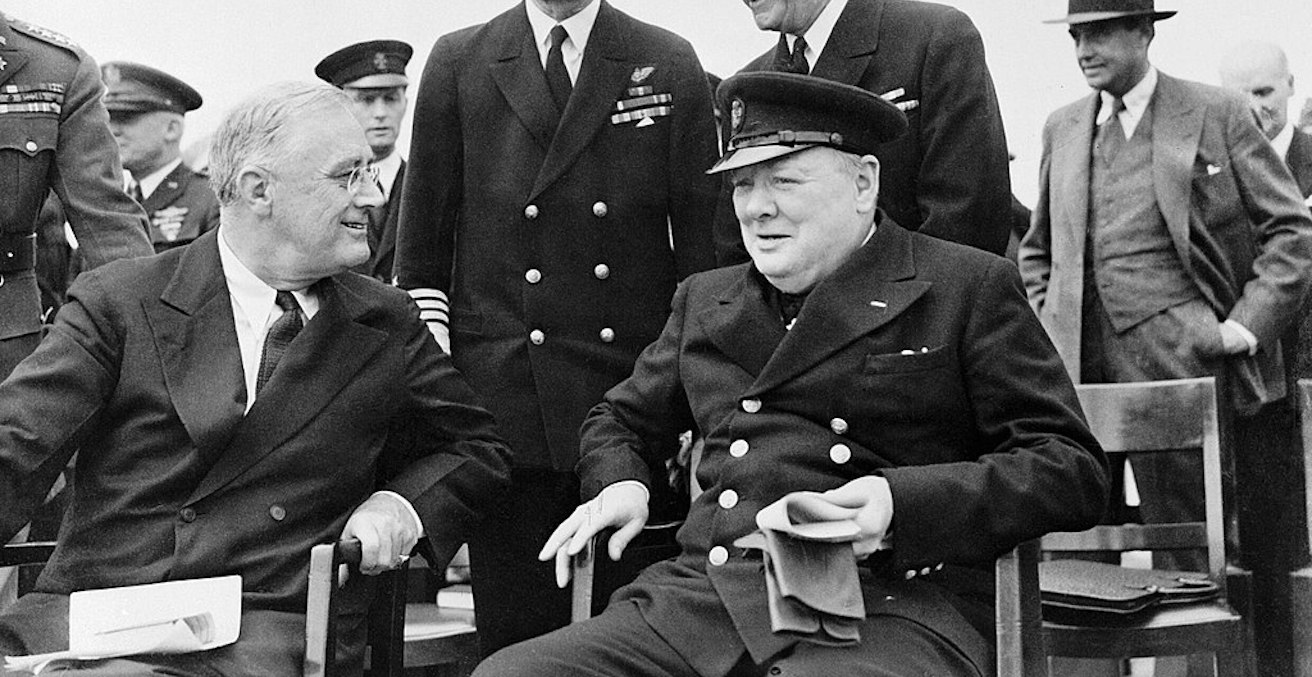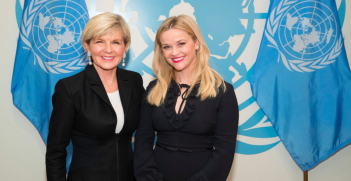The Rise and Fall of the Liberal International Order

The broad shape of the international order after the World War II was a liberal internationalist system embracing collective security, economic openness and social progress. These central tenets are now all in doubt.
This article is second in a series of three ahead of the AIIA’s conference on Australia and the Rules-Based International Order on 18-19 July. Read the first article here.
The broad shape of the international order after the Second World War had been foreshadowed in the Atlantic Charter agreed by Roosevelt and Churchill in August 1941. The Charter described a liberal internationalist system that would embrace collective security, economic openness and social progress. It would attempt to combine the reality of power with moral force in a way that avoided the ineffectiveness of the League of Nations.
Australia was not in any position to challenge the direction of the emerging order, nor did it want to. But it did, by now, have a stronger sense of its own capacity to shape the world at the margins, and in its own right, not just by working through the Empire.
Parts of the liberal agenda were challenging. Like other allies Australia had agreed as part of the Mutual Aid Agreement with the United States during the war to the ‘elimination of all forms of discriminatory treatment in international commerce and…the elimination of tariffs and other trade barriers’. This demanded a revolutionary change in the way the country thought about its economic interaction with the world.
And although it had been clear since the Labor Party Prime Minister John Curtin’s announcement of Australia’s ‘turn to America’ in December 1941 that the nation’s security future would involve the United States, Australians wanted to believe that Britain would also be involved.
Australia was lucky during this period to have in Curtin, his successor, Ben Chifley, and the External Affairs Minister, HV Evatt, political leaders who, notwithstanding individual frailties, understood that the world had changed and wanted to be prepared for it.
A ‘post-hostilities section’ was established in the newly-professionalised Department of External Affairs just months after Singapore fell to help prepare for the post-war world. It was proposed and run by Paul Hasluck, the future Liberal Party foreign minister.
While the war was still being fought, Australia became an active participant in the series of conferences on agriculture, labour and economic cooperation which began to shape the structures of the new system.
When Churchill, Roosevelt and Chiang Kai-shek agreed at the Cairo Conference in November 1943 to terms of peace in the Pacific without consulting Australia, Evatt was determined that Australia’s interests should not be ignored in future.
Intellectually gifted and emotionally complicated, Evatt was the leader and driver of the Australian response at the San Francisco conference in 1945 where he was an influential figure, achieving changes to the draft UN Charter that increased the role of the smaller states and expanded the new organisation’s economic and social remit.
Some things hadn’t changed: the continuing suspicion of Japan and its possible rearmament, which was the impulse that drove the negotiation of the ANZUS treaty, and a determination to maintain the White Australia Policy.
Strategic dilemma
The emerging foreign policy had to respond to the nation’s central strategic dilemma: how does a small population, located far from the centres of global power and the markets for its products, secure its audacious claim to a great continent?
Every government in Canberra after 1945 saw the same three ways of addressing that dilemma.
The first way was to hold close to what Robert Menzies famously called ‘our great and powerful friends’. He had in mind both Britain and the United States. But as Britain began its long withdrawal east of Suez and negotiated entry to Europe, the relationship with the United States became clearly the more important.
The second response was to engage with the neighbouring region of Asia and the Pacific in an effort to make it as conducive as possible to Australian interests. The principal driver for much of Australian foreign policy over the following fifty years, from India’s independence to East Timor’s, was the great process of European decolonisation in Asia. The Chifley Government’s decision to lend support to the independence fighters in Indonesia rather than to the returning Dutch administration was the first great test of Australian foreign policy.
Engagement with Asia also involved over time a profound economic shift. First with Japan, then South Korea and China, Australia found itself in a propitious alignment providing the raw materials and later the services that the booming Asian economies would need.
The final way in which Australia addressed its strategic challenge was through support for a rules-based global order. It recognised that as a country large enough to have real interests in the global system but too small to get what it wanted by throwing its weight around, it was always going to be better served in a world in which established rules, which it played a part in setting, prevailed over ad hoc deals.
So Australia was an active participant in the development of many of the rules and norms which now set the parameters of international behaviour, including the Bretton Woods institutions, the Law of the Sea Convention, the Antarctic Treaties, humanitarian law and arms control.
This post-war order suited Australia perfectly.
American support for open international trade helped drive unprecedented global growth. Its network of alliances in Europe and Asia provided a stable security framework which enabled this to happen. There was an easy alignment between Australia’s principal ally and its main economic partners.
Australia had a voice in the multilateral institutions in which rule-making and norm-setting took place. It could enthusiastically support the rules-based order, because it was essentially set by us and our friends.
The reasons for their decline are many. But they begin with its very success in generating the economic growth that made global development possible and reduced American pre-eminence. Globalisation restored the nexus, all else being equal, between population size and economic weight that had been severed by the industrial revolution.
The central tenets of the liberal order – American belief in the system and willingness to invest in it, an effective network of alliances and broadly functioning multilateral institutions – are now all in doubt.
Allan Gyngell is National President of the Australian Institute of International Affairs and an Honorary Professor in the ANU’s College of Asia and the Pacific.
This article is second in a series of three edited extracts from his Gallipolli Memorial Lecture delivered at the Royal United Services Institute for Defence and Security Studies in London on 29 June 2018. Read the first article here.
A conference on Australia and the Rules-Based International Order will be held on 18-19 July organised by the Australian Institute of International Affairs, Department of Foreign Affairs and Trade and ANU Coral Bell School with the support of the Attorney-General’s Department. If you are interested in this invitation-only event, contact rbio@20.185.176.227.





